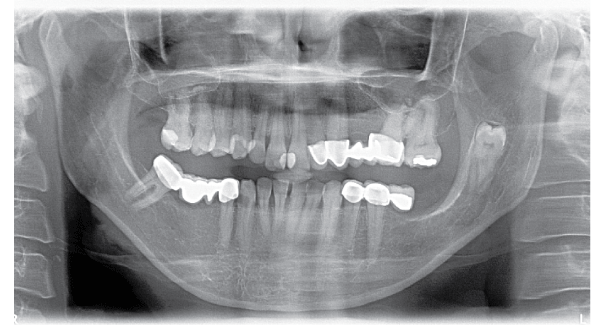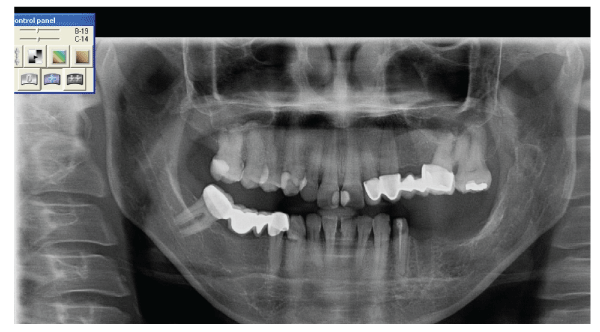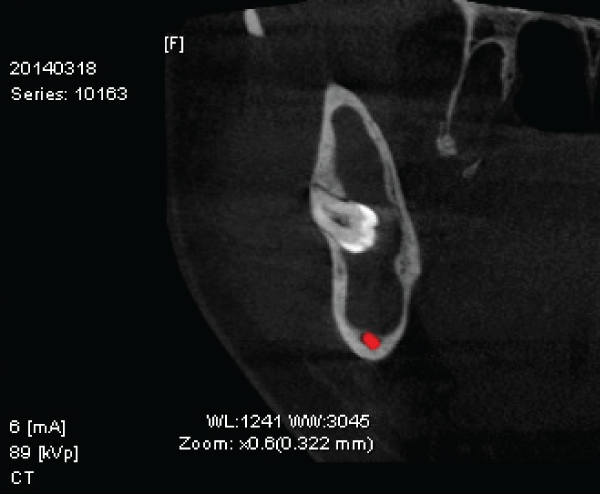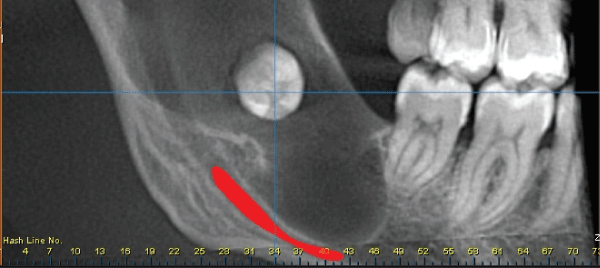International Journal of Oral and Dental Health
Ectopic Third Molar in Mandibular Ramus: Report of Two Cases and Literature Review
Aysegul Apaydin* and Muhammed Salahattin
Department of Oral & Maxillofacial Surgery, Istanbul University, Turkey
*Corresponding author: Dr. Aysegul Apaydin, Department of Oral & Maxillofacial Surgery, Faculty of Dentistry, Istanbul University, Turkey, Tel: +90 542 215 86 28, Fax: +90 212 234 38 71, E-mail: aysapa@gmail.com
Int J Oral Dent Health, IJODH-1-007, (Volume 1, Issue 1), Case Report; ISSN: 2469-5734
Received: March 13, 2015 | Accepted: April 10, 2015 | Published: April 13, 2015
Citation: Apaydin A, Salahattin M (2015) Ectopic Third Molar in Mandibular Ramus: Report of Two Cases and Literature Review. Int J Oral Dent Health 1:007. 10.23937/2469-5734/1510007
Copyright: © 2015 Apaydin A, et al. This is an open-access article distributed under the terms of the Creative Commons Attribution License, which permits unrestricted use, distribution, and reproduction in any medium, provided the original author and source are credited.
Abstract
Objectives: Ectopic mandibular third molar is a rare condition, and information about its causes and characteristics is limited. Its etiology has not yet been completely clarified. This article reports two cases of ectopic mandibular third molar and reviews the literature on the clinical signs and symptoms and management of this condition.
Material and methods: We searched in medline Pubmed (http://www.ncbi.nlm.nih.gov/PubMed) for articles from 1979-2014 and almost non English papers were excluded.
Results: We found 34 cases (37 ectopic teeth) reported in different locations in 11 men and 23 women. Mean age was 46.3 (range 22 to 80). Those cases were evaluated alongside the new clinical cases that we presented. The most possible cause of ectopic molars was related pathology such as odontogenic cyst.
Conclusion: The results of this review suggest that displaced teeth must be removed if they cause symptoms. The surgical route should be designed according to the location and position of the third molar.
Clinical relevance: Treatment of ectopic teeth should be carefully planned according to the potential for trauma caused by the surgery.
Keywords
Third molar, Ectopic tooth, Mandible, Ramus
Introduction
Impaction of mandibular third molars is a common condition, with a frequency of 20%-30%, and a higher prevalence in women [1,2]. In some cases the teeth tend to occupy an abnormal position because of lack of space in the posterior side of mandible. Third molar removal is one of the most common surgical procedures [3]. Unerupted third molars are normally found near the usual site of eruption. Sometimes, however, these teeth are found at places distant from their points of origin [1-35]. Ectopic positions include condyle ramus, coronoid process, sigmoid notch and lower border of angle of the mandible. Ectopic mandibular third molars are not very common and the etiology remains unclear.
Impacted mandibular third molars are categorized according to the anterior-posterior space between the second molar and the mandibular ramus, its superior-inferior position, its medial-lateral in the body of the mandible, and the position of its long axis [36,37]. Ectopic mandibular third molars, however, are unusual, with their heterotopic positions reported in the condylar area, in the ascending ramus of the mandible, or in the coronoid process. Due to the rarity of this condition, few cases have been reported, and the etiology, clinical features and optimal management of ectopic mandibular third molar are still unclear.
Owing to the rarity of ectopic third molars in the ramus region, we aimed to present two cases in the present paper and review the related literature over the past 35 years (1979-2014). A conservative intraoral surgical technique for tooth removal is also described.
Case 1
A 38-year-old woman visited our outpatient department in April 2013 complaining of pain and swelling on the left side of her face for two weeks. Radiologic examination revealed her lower left third molar, located on the left ascending ramus (Figure 1). It was sitting with the crown facing the neck of the condyle and the apex facing downward. A computerized tomography (CT) scan exposed the relationship of the ectopic tooth to the anatomic structure. It was positioned upward and outward to the close to the outer cortical bone of the ramus. Small follicular space was also identified enveloping to the crown of the tooth. Under endotracheal general anesthesia, intraoral access was obtained via an incision on the anterior edge of the ramus along to the linea oblique externa. The ramus was exposed and an oscillating saw was used to make cuts in the cortical bone at the estimated site of ectopic tooth; then a 2mm carpid round bur with a straight surgical hand piece was used to make a bony window to expose the tooth. The molar was then elevated, enucleated surrounding soft tissues were sent to pathology, and the wound was closed in a routine fashion. At the one-week follow-up the patient complained of slight paresthesia at her labial mucosa on the left side, but this complication had healed after two weeks (Figure 2).
Case 2
A 25-year-old woman was referred to our clinic from the otolaryngology department with a complaint of pain and swelling on the right side of her face. The patient had suffered several episodes of intense pain in preauricular region and in the ear. History at the time of admission showed that she had been receiving an antibiotic from the inpatient department of another hospital.
Extra-oral examination revealed a swelling over the right side of face extending from the angle of the mandible to the temporal region. The skin was of normal color. On palpation there was no tenderness or localized rise in temperature. Intra-oral examination revealed a discharge distal to second molar. Pus aspiration was obtained by needle. Radiological examination revealed a large radiolucent area in the ramus with dimensions of around 4x8. The third molar was positioned in middle of the ramus (Figure 3-5). The crown segment of tooth was facing the lingual side and the apex was facing the vestibular cortex of the mandibular ramus.
The tooth was impacted and displaced superiorly in the ramus, approximating to the outer and anterior cortex of the ramus. There was a slight expansion of that area. Surgical removal was performed under general anesthesia with access in a routine fashion. The bone was removed around the tooth. The tooth was elevated carefully, the bony window enlarged, the cyst epithelium enucleated and the cyst cavity irrigated with saline. The enucleated tissue was sent to pathology department. The histopathology report confirmed the diagnosis of a dentigerous cyst (Protocol No: 43540832212). There was a slight paresthesia in the postoperative period, being fully recovered in 4 weeks. The patient was checked with one week intervals; swelling and the ear pain disappeared gradually.
Literature Review and Discussion
We searched medline Pubmed (http://www.ncbi.nlm.nih.gov/PubMed) using the following key words "ectopic tooth", "third molar" and "mandibular" including articles from 1979-2014, and almost non English papers were excluded. We found 34 cases (37 ectopic teeth) reported in different locations; we identified them 4 subdivision: mandibular ramus, coronoid process, mandibular condyle and mandibular angle. We found higher prevalence in women including 23 cases. The mean age was 46.3 (range 22 to 80) of 11 men and 23 women. 10 of the ectopic mandibular third molars were located in ramus, 18 in condyle, 3 in the angulus, 3 in the coronoid process, 2 in the pterygomandibular space and one on the lower edge of the corpus. 20 of them were located right side and the other 17 on the left; 18 of the 37 teeth had been removed via intra-oral access, 14 extra-orally, and 5 had not received any treatment (Table 1). The most frequent symptoms were pain and swelling; other symptoms were trismus, difficulty in mastication, pus discharge, bad taste and temporomandibular joint dysfunctions. Of the ectopic molars, 21 were associated with cysts (mostly described as dentigerous cyst), 3 with abscess and 1 with osteomyelitis.
![]()
Table 1: Ectopic third molars in different locations.
View Table 1
A variety of case reports have described ectopic molars in different places on the mandible [1-8,10,12-25,27,29,30,32-35,38]. The etiology of ectopic teeth cannot be easily determined [23]. Several theories have been considered to explain ectopic locations such as trauma, ectopic formation of germs and aberrant eruption [27]. Impacted molars may be located at a distance from their normal location due to an aborted eruption, or displacement because of lesions (cyst or tumors) [1-6,7,11,18,21,29,32,33,38].
Diagnosis is based on clinical findings together with radiological assessment [3,37]. Whether third molars should be removed or not depends on the individual case. Ectopic third molars that are not symptomatic or associated with any disease do not require treatment [4,8,15,16,29]. If they lead to symptoms, however, it is obvious that they should be removed.
Some reported cases were associated with radiolucent lesions either small or large, confirmed by radiograph as dentigerous cysts. The most relevant pathogenesis for ectopic third molar seems to be odontogenic cyst. In the period 1979-2014, the most frequent location of ectopic molars was in the condyle (18 cases) [1,2,5-8,10,12,16,21,24,27,29,30,33,35]; 10 were in the ramus [1,3,6,14,17,20,32,34], with only 3 in the angulus [1,4,38], 3 in the coronoid [8,15,25] and 1 on the lower edge of the mandibular corpus.
Management of ectopic mandibular third molar depends of several factors such as signs, symptoms and associated pathology. Pathology in the mandibular ramus and the condyle leads to complications (condylar resorption, fracture and osteolysis) [6,18].
The choice of surgical approach is based on to the preference of the surgeon and the location of the tooth. All authors agree that treatment should be designed carefully with the aim of choosing the more conservative technique (in general, intra-oral access is performed whenever possible to avoid scars and nerve injury) [4-7,13,15,18,24,25,27,38]. The use of an endoscope produces better visualization of the surgical field [30].
Where extra-oral access is required, the submandibular and retromandibular routs are most frequently used [1,7,25,29]. The preauricular approach provides better vision of the condyle, but leaves a scar. The literature describes the use of an extra-oral approach when the molar is located in the condylar or subcondylar region [2,4-7,24,27,30,33,35].
We used the intra-oral approach in our cases and managed to reach the teeth and enucleated the cyst reasonably easily and they healed uneventfully (Figure 2,6).
Complications are rare. The most frequent complication is scarring and damage to nerve structure through extra-oral access. Mandibular fractures can be possible when a greater osteotomy is performed.
In summary, our literature review showed more cases of ectopic third molars located in the condylar region than in the ramus or coronoid. The two new clinical cases we present here were in the ramus. One was associated with a dentigerous cyst. Among etiologic hypotheses, odontogenic cysts appear to be the most relevant cause. In most of the reported cases there were no serious complications.
Conclusion
Ectopic molars in the ascending ramus are very rare. The migration of wisdom teeth should be kept in mind and patients should be controlled regularly when impacted teeth have not been removed.
If the decision is removal of the impacted tooth, the procedure should be chosen according to the individual case of each patient. The potential risks, possible complications and benefits of the procedures should be evaluated very carefully.
References
-
Ahmed N, Speculand B (2012) Removal of ectopic mandibular third molar teeth: literature review and a report of three cases. Oral Surg 5: 39-44.
-
Shivashankara C, Manjunatha BS, Tanveer A (2012) Ectopic mandibular third molar in subcondylar region: report of a rare case. Oral Maxillofac Surg 16: 153-155.
-
Bortoluzzi MC, Manfro R (2010) Treatment for ectopic third molar in the subcondylar region planned with cone beam computed tomography: a case report. J Oral Maxillofac Surg 68: 870-872.
-
Adams AM, Walton AG (1996) Case report. Spontaneous regression of a radiolucency associated with an ectopic mandibular third molar. Dentomaxillofac Radiol 25: 162-164.
-
Bowman J, O'Regan B, Bhopal S (2014) Transmasseteric antero-parotid approach: a technique adaptation for ectopic subcondylar third molar removal and associated dentigerous cyst enucleation. Br J Oral Maxillofac Surg 52: e7-8.
-
Burton DJ, Scheffer RB (1980) Serratia infection in a patient with bilateral subcondylar impacted third molars and associated dentigerous cysts: report of case. J Oral Surg 38: 135-138.
-
Bux P, Lisco V (1994) Ectopic third molar associated with a dentigerous cyst in the subcondylar region: report of case. J Oral Maxillofac Surg 52: 630-632.
-
Chongruk C (1991) Asymptomatic ectopic impacted mandibular third molar. Oral Surg Oral Med Oral Pathol 71: 520.
-
Di Pasquale P, Shermetaro C (2006) Endoscopic removal of a dentigerous cyst producing unilateral maxillary sinus opacification on computed tomography. Ear Nose Throat J 85: 747-748.
-
Gadre KS, Waknis P (2010) Intra-oral removal of ectopic third molar in the mandibular condyle. Int J Oral Maxillofac Surg 39: 294-296.
-
Haddad AJ, Talwar RM, Clokie CM (2006) The importance of recognizing pathology associated with retained third molars. J Can Dent Assoc 72: 41-45.
-
Iglesias-Martin F, Infante-Cossio P, Torres-Carranza E, Prats-Golczer VE, Garcia-Perla-Garcia A (2012) Ectopic third molar in the mandibular condyle: a review of the literature. Med Oral Patol Oral Cir Bucal 17: e1013-1017.
-
Jones TA, Garg T, Monaghan A (2004) Removal of a deeply impacted mandibular third molar through a sagittal split ramus osteotomy approach. Br J Oral Maxillofac Surg 42: 365-368.
-
Kansy K, Gander E, Staff C, Hoffmann J, Freier K (2014) Ectopic wisdom tooth at the mandibular ascending ramus. Oral Surg 7: 27-32.
-
Keros J, Susic M (1997) Heterotopia of the mandibular third molar: a case report. Quintessence Int 28: 753-754.
-
Kim JS (2011) Cone beam computed tomography findings of ectopic mandibular third molar in the mandibular condyle: report of a case. Imaging Sci Dent 41: 135-137.
-
Kupferman SB, Schwartz HC (2008) Malposed teeth in the pterygomandibular space: report of 2 cases. J Oral Maxillofac Surg 66: 167-169.
-
Lambade P, Lambade D, Dolas RS, Virani N (2013) Ectopic mandibular third molar leading to osteomyelitis of condyle: a case report with literature review. Oral Maxillofac Surg 17: 127-130.
-
Lee YK, Park SS, Myoung H (2013) Surgical extraction of mandibular third molar in pterygomandibular space: a case report. J Korean Assoc Oral Maxillofac Surg 39: 242-245.
-
Markowitz NR, Wolford DG, Harrington WS, Monaco F (1979) Bilateral vertical impacted third molars of the midramus. Oral Surg Oral Med Oral Pathol 47: 107.
-
Medici A, Raho MT, Anghinoni M (2001) Ectopic third molar in the condylar process: case report. Acta Biomed Ateneo Parmense 72: 115-118.
-
Mohan S, Kankariya H, Fauzdar S (2012) Impacted Inverted Teeth with their Possible Treatment Protocols. J Maxillofac Oral Surg 11: 455-457.
-
Abu-El Naaj I, Braun R, Leiser Y, Peled M (2010) Surgical approach to impacted mandibular third molars--operative classification. J Oral Maxillofac Surg 68: 628-633.
-
Pace C, Holt D, Payne M (2010) An unusual presentation of an ectopic third molar in the condylar region. Aust Dent J 55: 325-327.
-
Procacci P, Albanese M, Sancassani G, Turra M, Morandini B, et al. (2011) Ectopic mandibular third molar: report of two cases by intraoral and extraoral access. Minerva Stomatol 60: 383-390.
-
Rai A, Rai NJ, Rai MA, Jain G (2013) Transoral removal of ectopic maxillary third molar situated superiorly to maxillary antrum and posteroinferiorly to the floor of orbit. Indian J Dent Res 24: 756-758.
-
Salmerón JI, del Amo A, Plasencia J, Pujol R, Vila CN (2008) Ectopic third molar in condylar region. Int J Oral Maxillofac Surg 37: 398-400.
-
Srinivasa Prasad T, Sujatha G, Niazi TM, Rajesh P (2007) Dentigerous cyst associated with an ectopic third molar in the maxillary sinus: a rare entity. Indian J Dent Res 18: 141-143.
-
Srivastava RP, Singh G (1982) An unusual impacted inverted molar in mandibular condyle with preauricular sinus (a case report). J Indian Dent Assoc 54: 67-69.
-
Suarez-Cunqueiro MM, Schoen R, Schramm A, Gellrich NC, Schmelzeisen R (2003) Endoscopic approach to removal of an ectopic mandibular third molar. Br J Oral Maxillofac Surg 41: 340-342.
-
Thakur G, Nair PP, Thomas S, Ahuja R, Kothari R (2011) Dentigerous cyst associated with ectopic maxillary third molar in maxillary antrum. BMJ Case Rep 2011.
-
Toranzo Fernandez M, Terrones Meraz MA (1992) Infected cyst in the coronoid process. Oral Surg Oral Med Oral Pathol 73: 768.
-
Tümer C, Eset AE, Atabek A (2002) Ectopic impacted mandibular third molar in the subcondylar region associated with a dentigerous cyst: a case report. Quintessence Int 33: 231-233.
-
Wang CC, Kok SH, Hou LT, Yang PJ, Lee JJ, et al. (2008) Ectopic mandibular third molar in the ramus region: report of a case and literature review. Oral Surg Oral Med Oral Pathol Oral Radiol Endod 105: 155-161.
-
Wassouf A, Eyrich G, Lebeda R, Grätz KW (2003) Surgical removal of a dislocated lower third molar from the condyle region: case report. Schweiz Monatsschr Zahnmed 113: 416-420.
-
Abu-El Naaj I, Braun R, Leiser Y, Peled M (2010) Surgical approach to impacted mandibular third molars--operative classification. J Oral Maxillofac Surg 68: 628-633.
-
Wenzel A, Aagaard E, Sindet-Pedersen S (1998) Evaluation of a new radiographic technique: diagnostic accuracy for mandibular third molars. Dentomaxillofac Radiol 27: 255-263.
-
Goel A, Patil P, Bansal R, Sabharwal R (2013) Dentigerous cyst involving mandibular third molar: Conservative treatment with radiologic follow-up and review of literature. Clin Cancer Investig J 2: 233-236.











